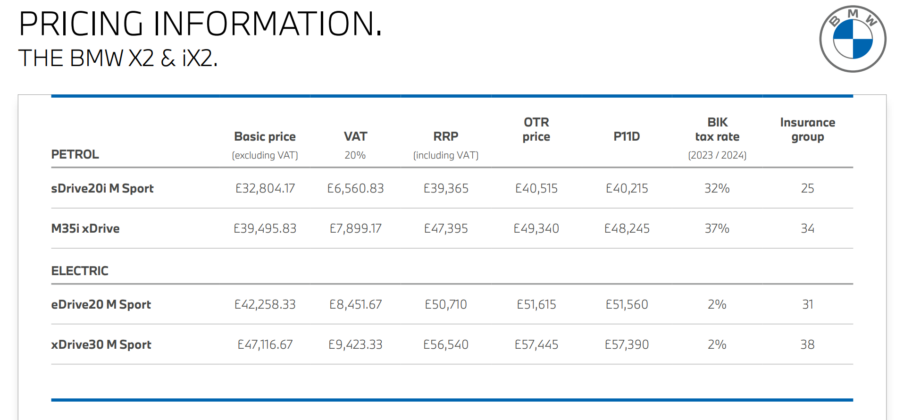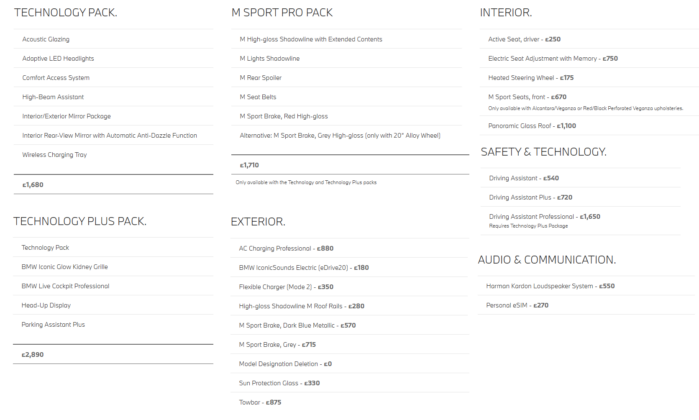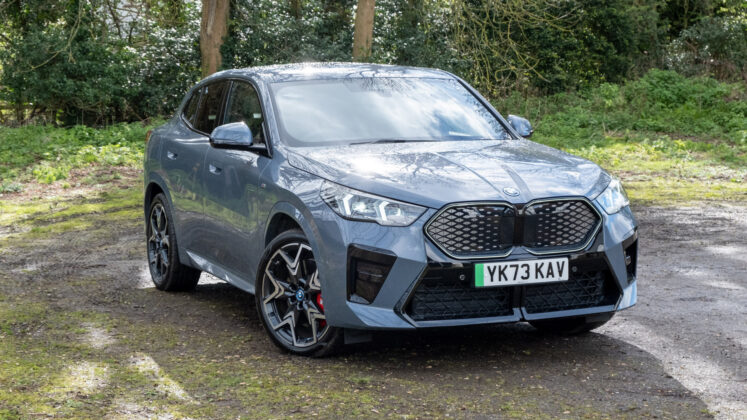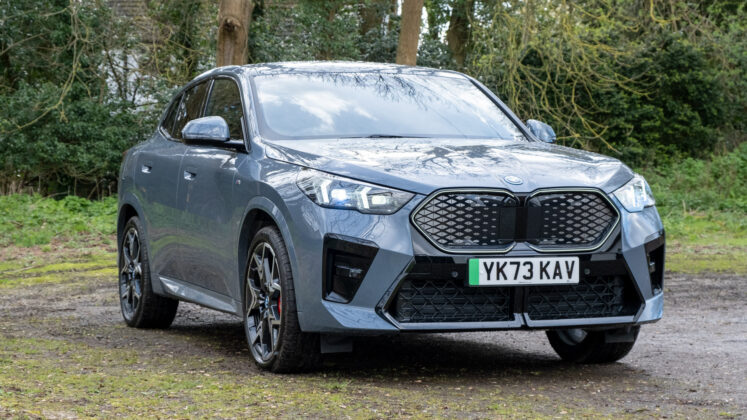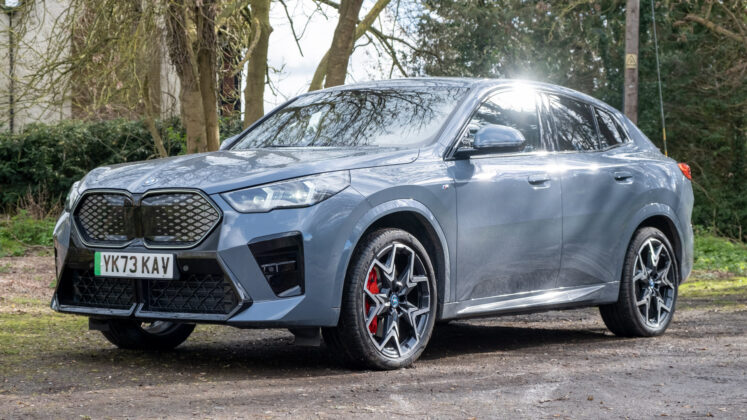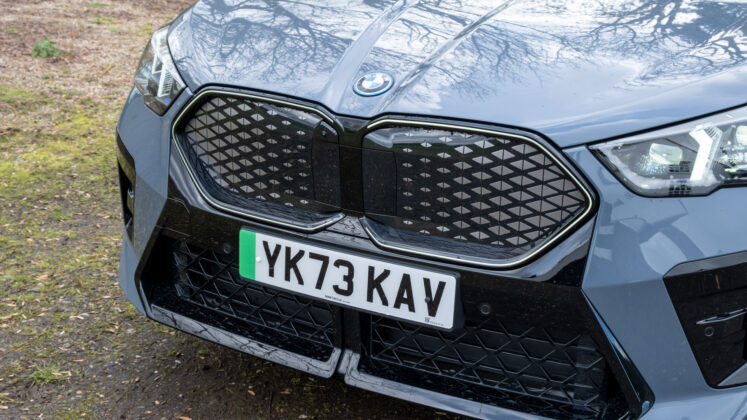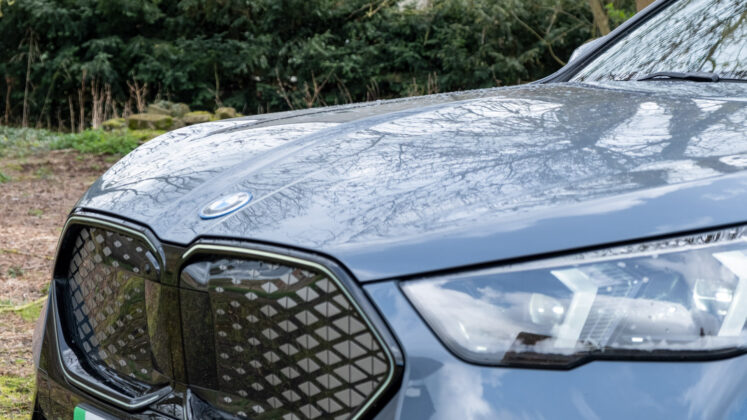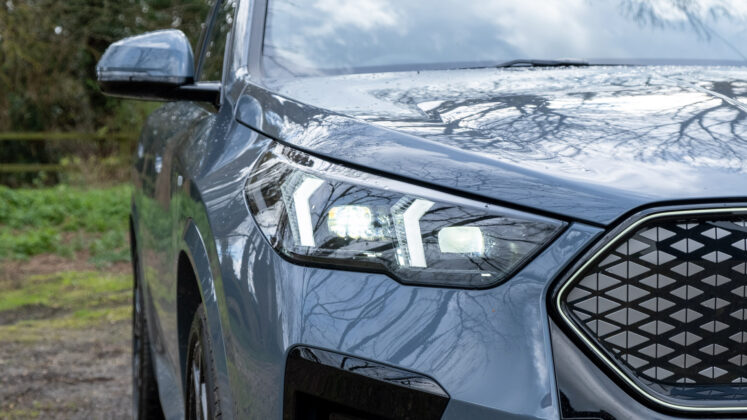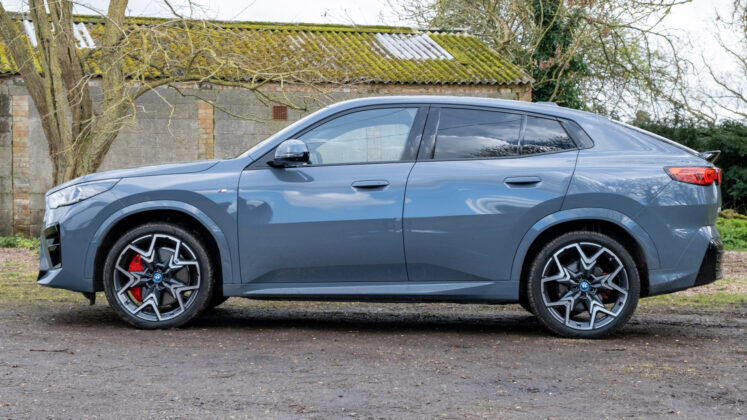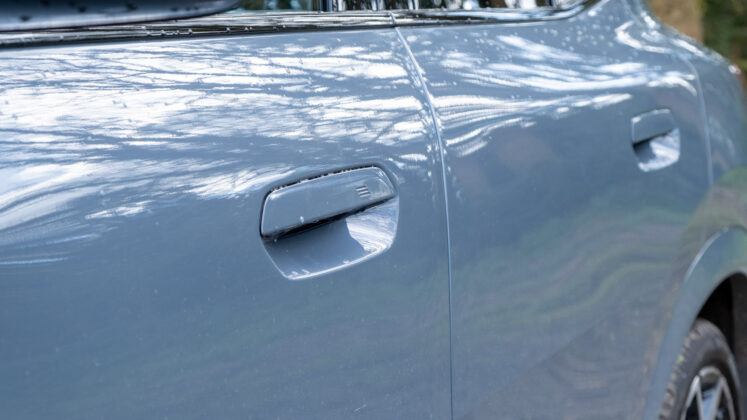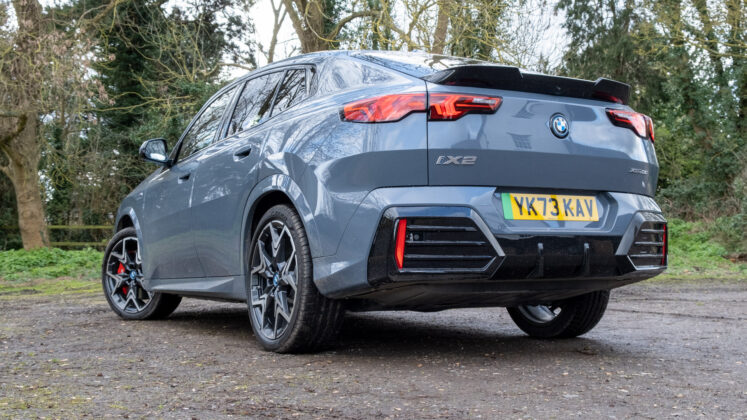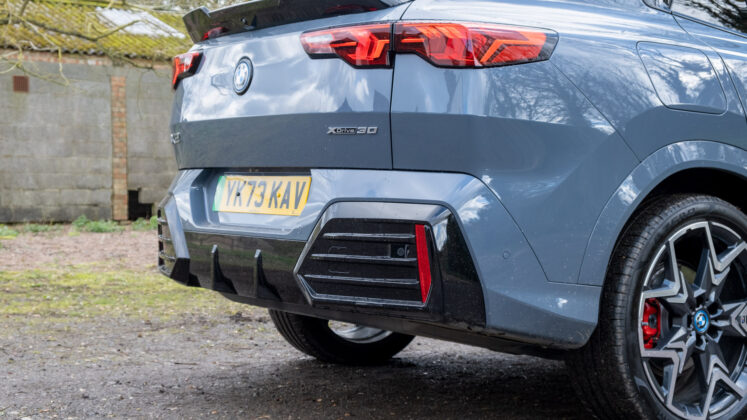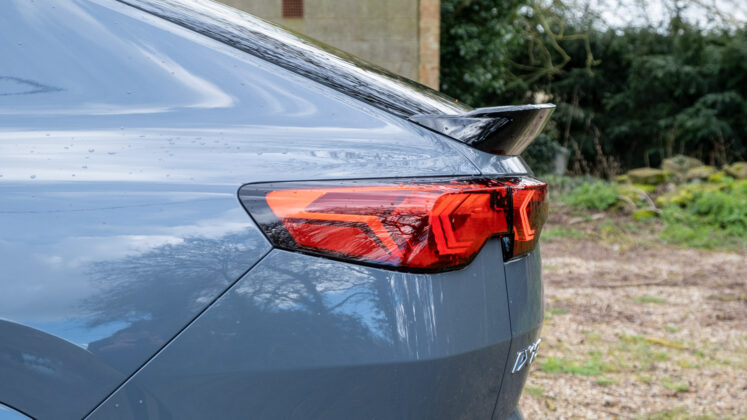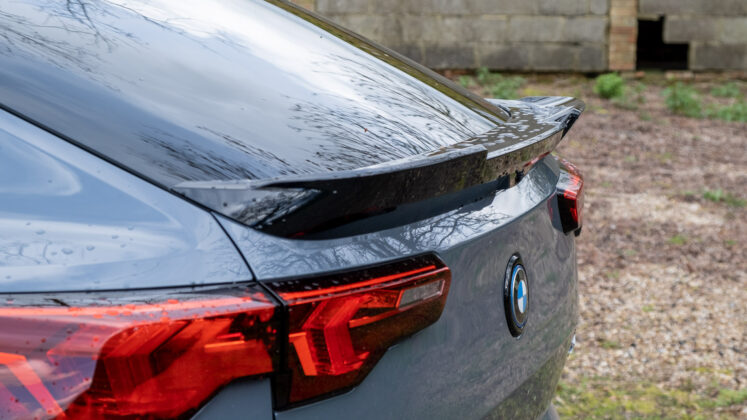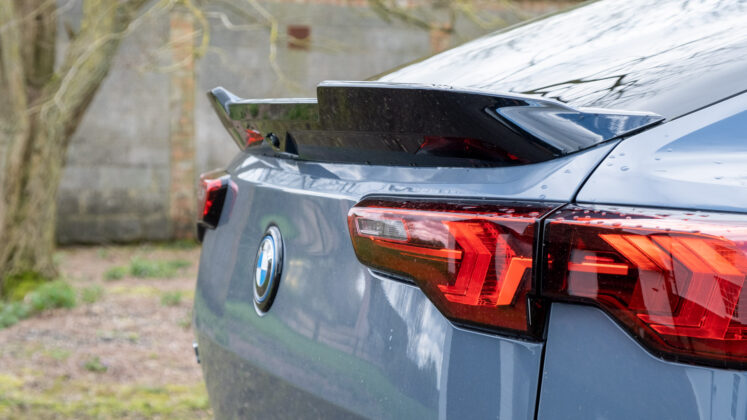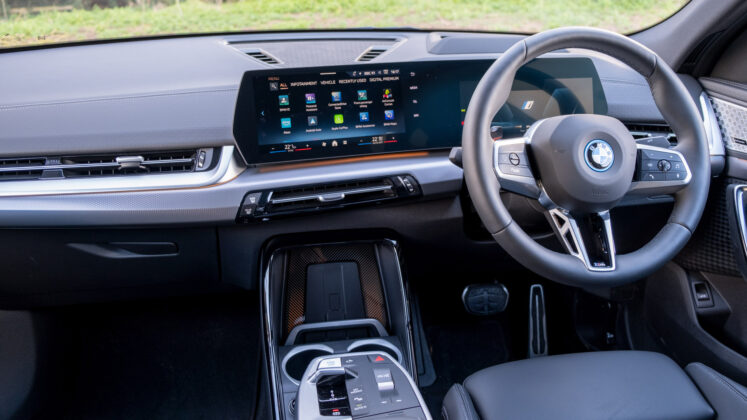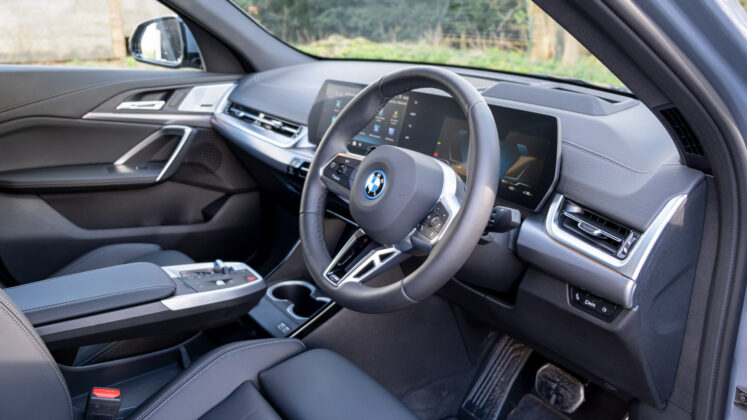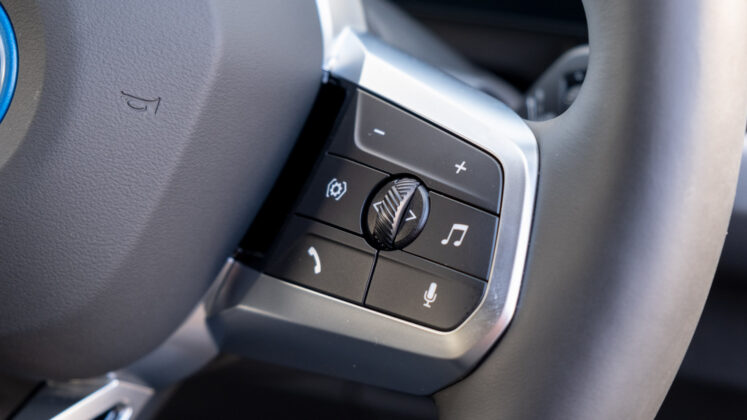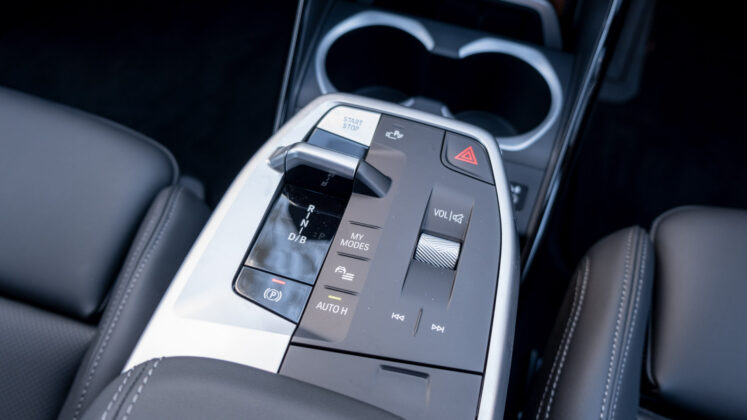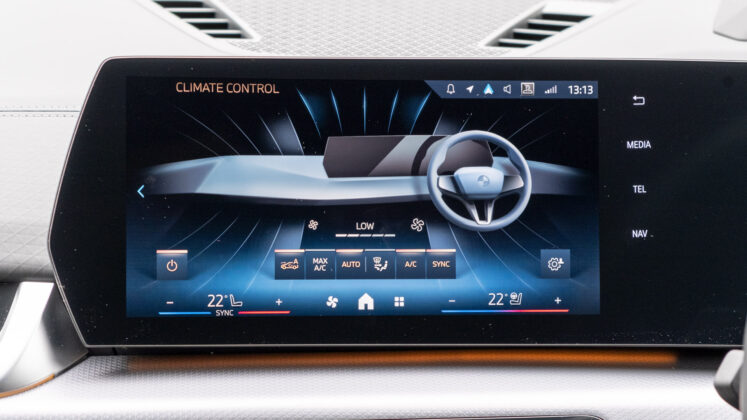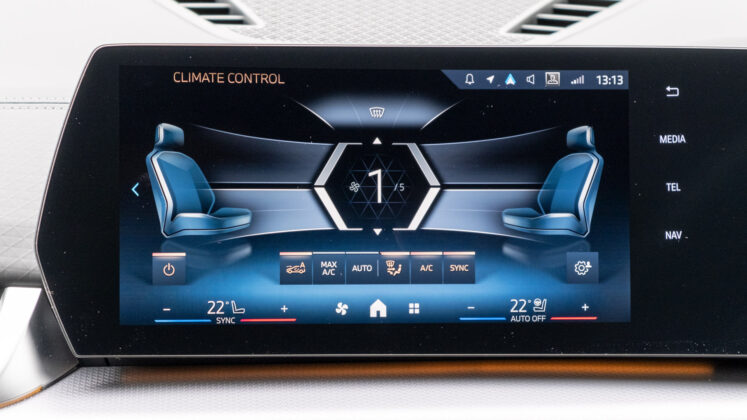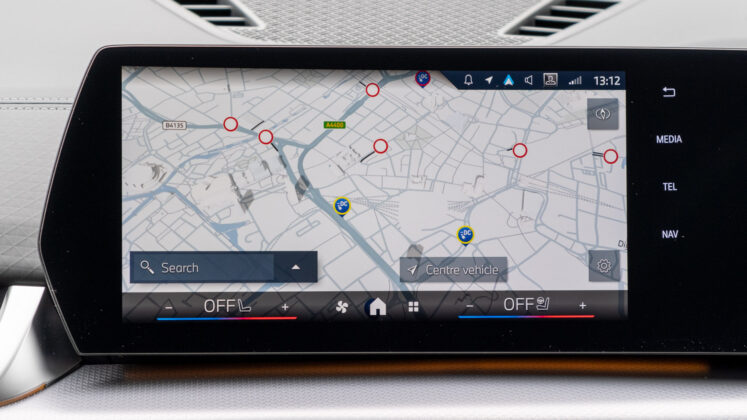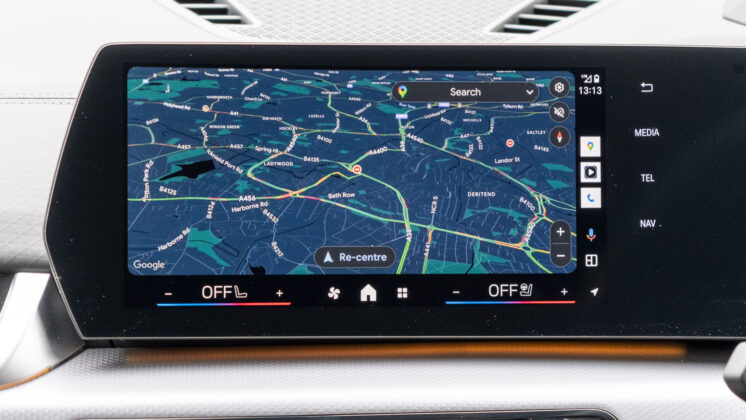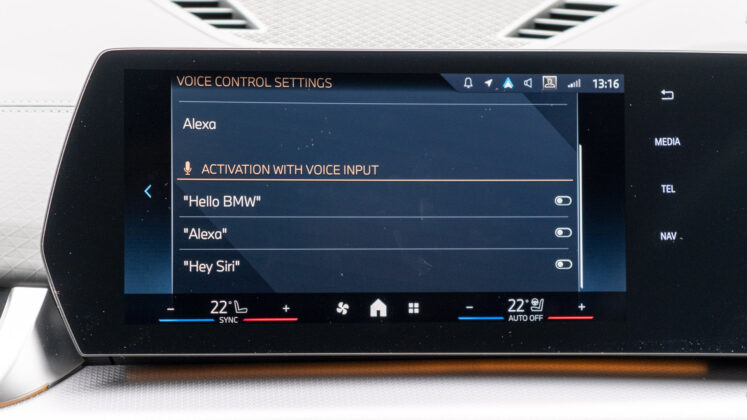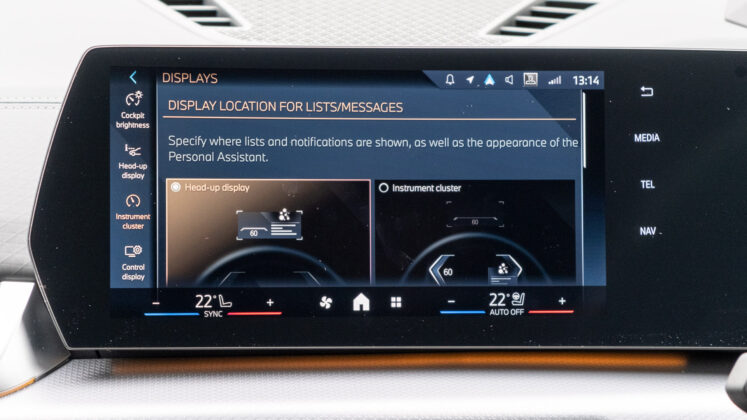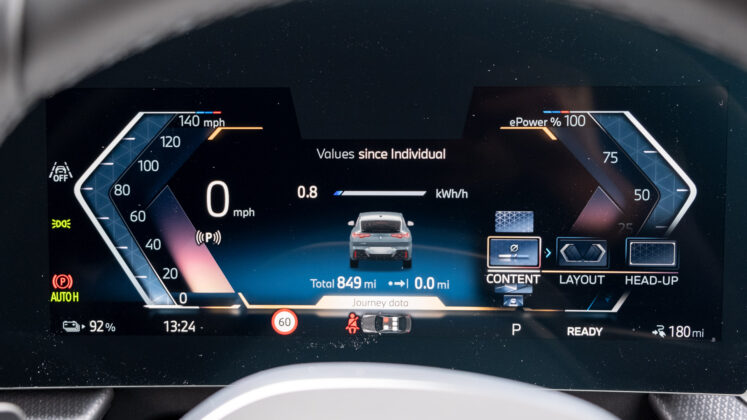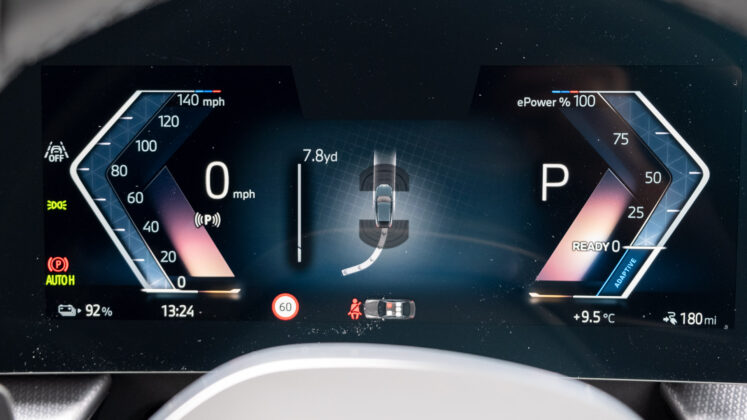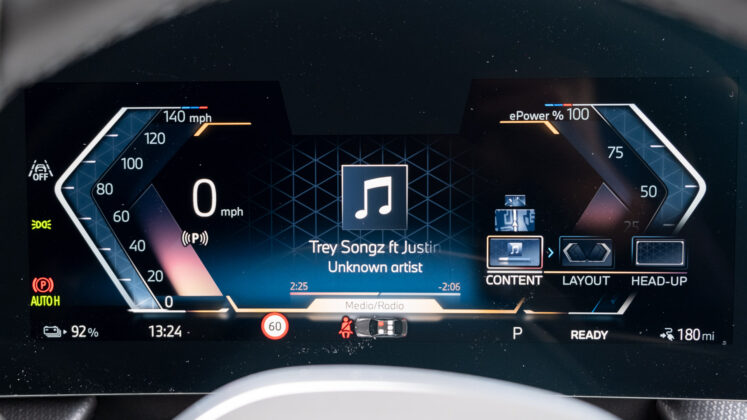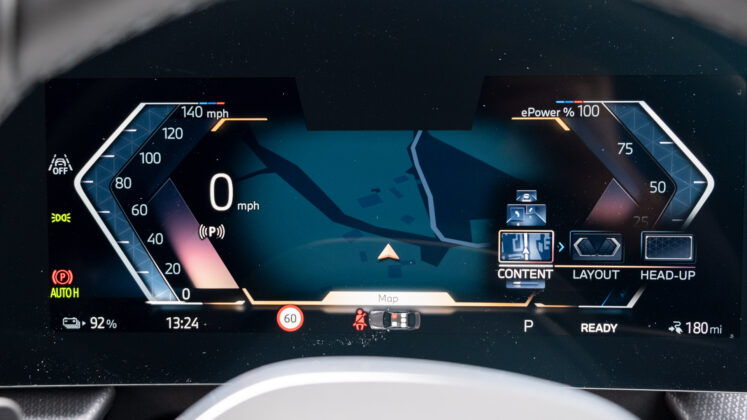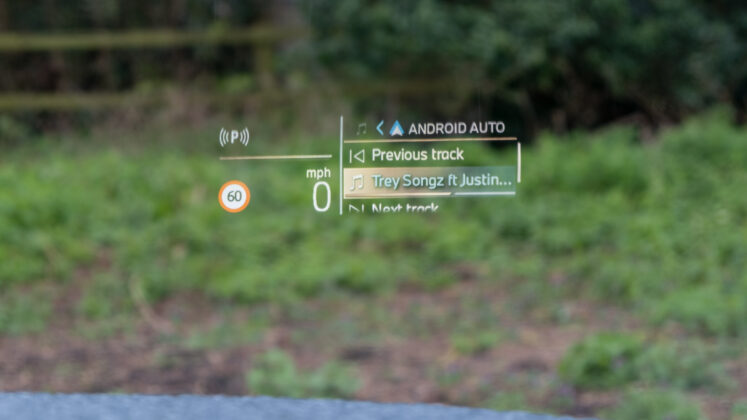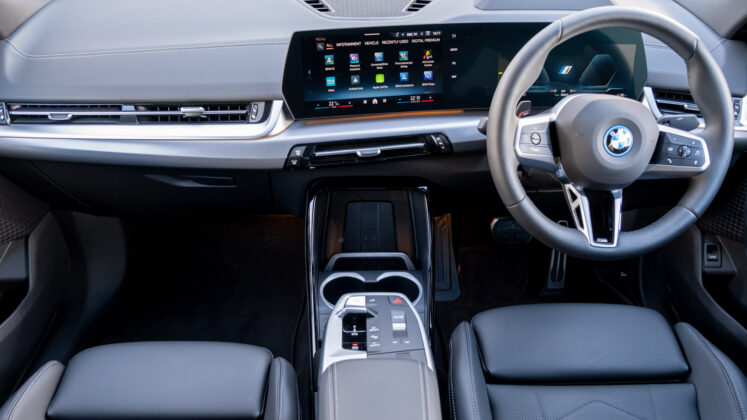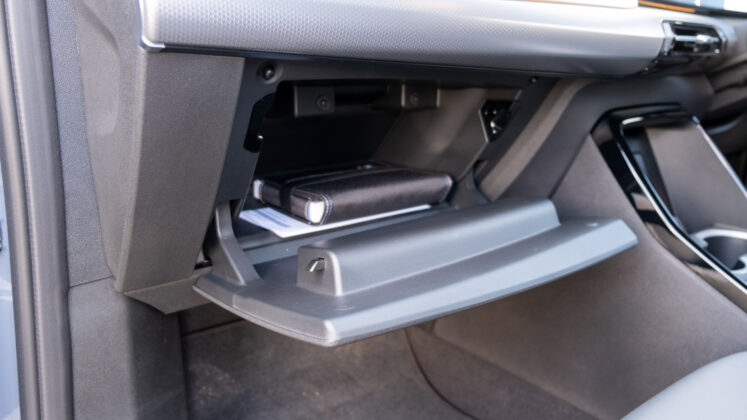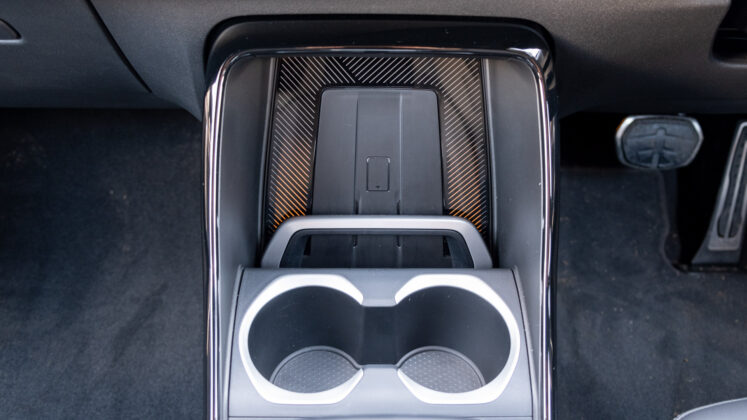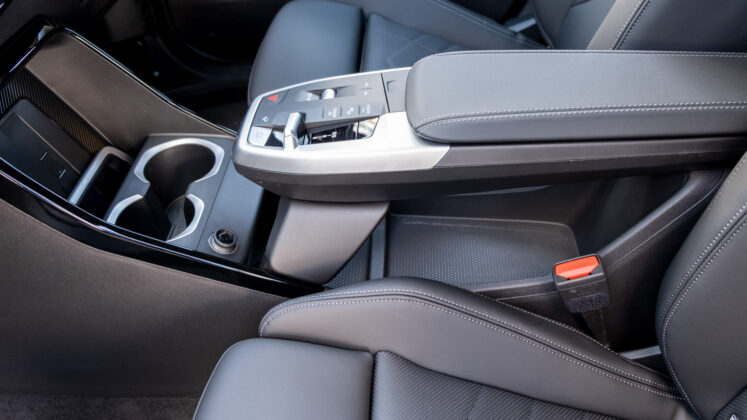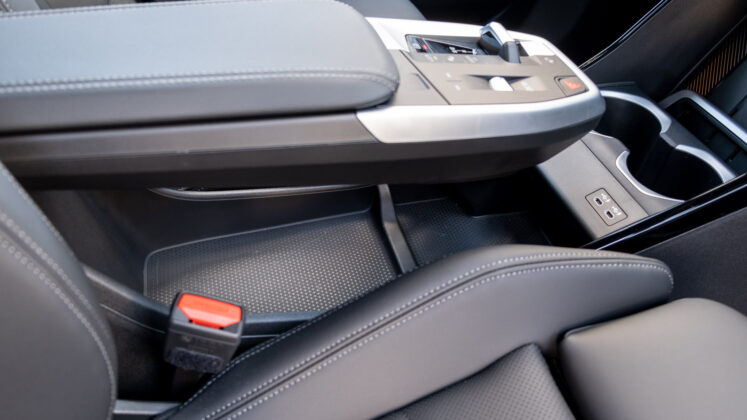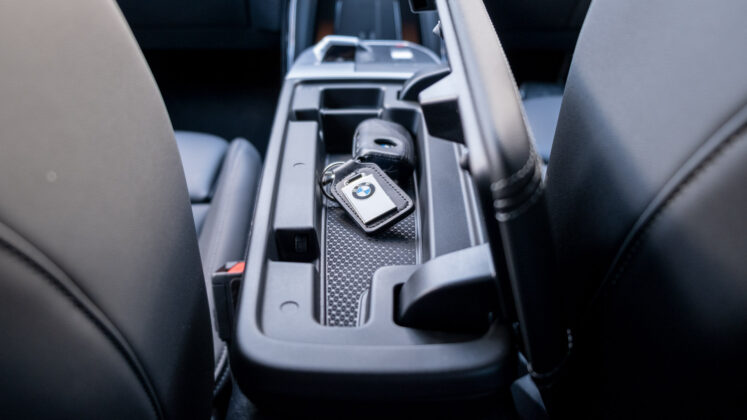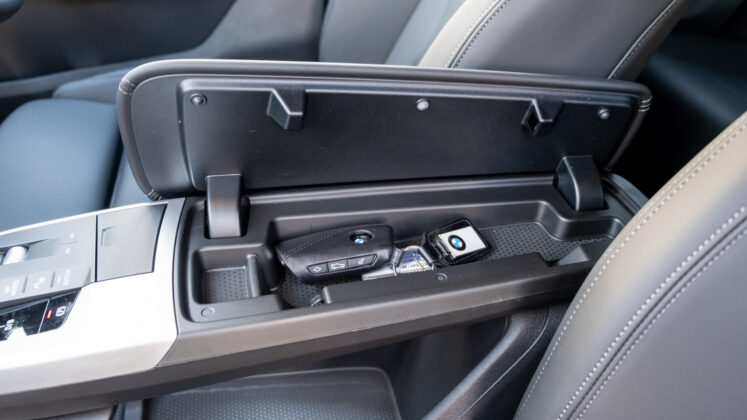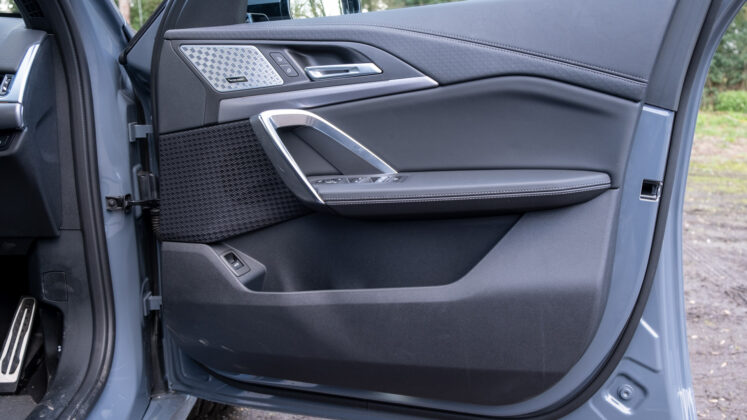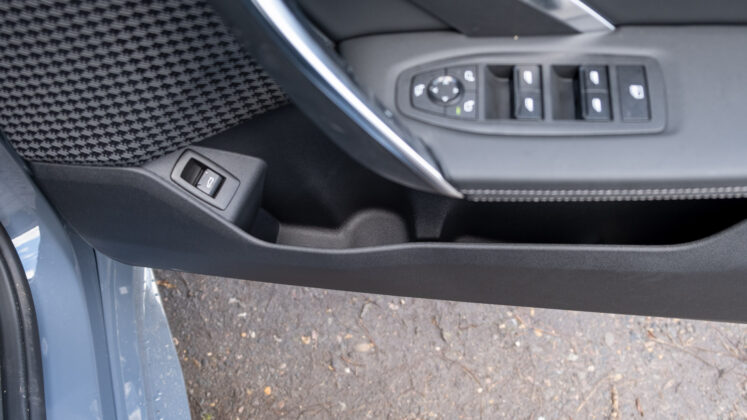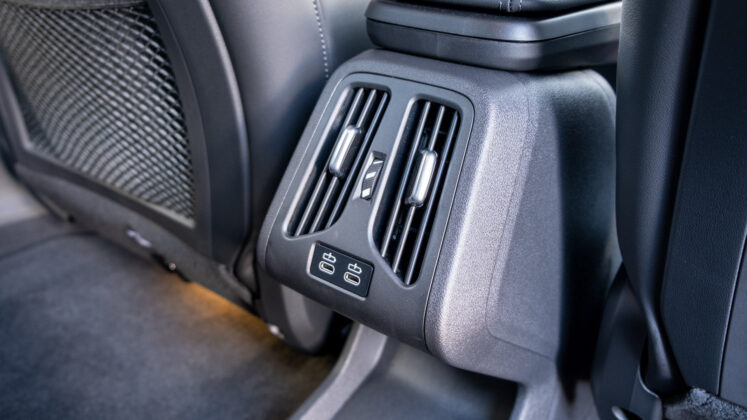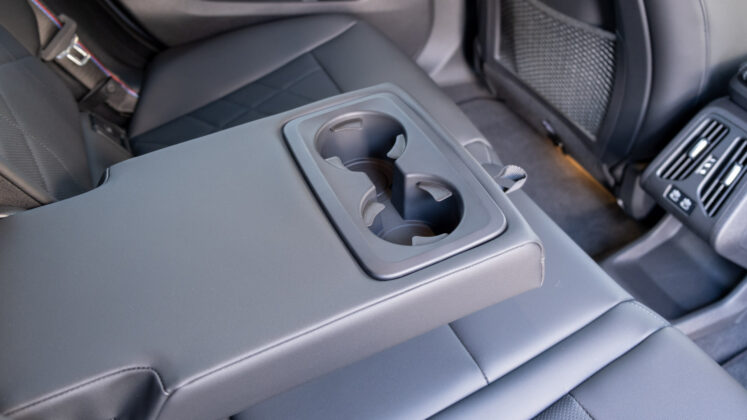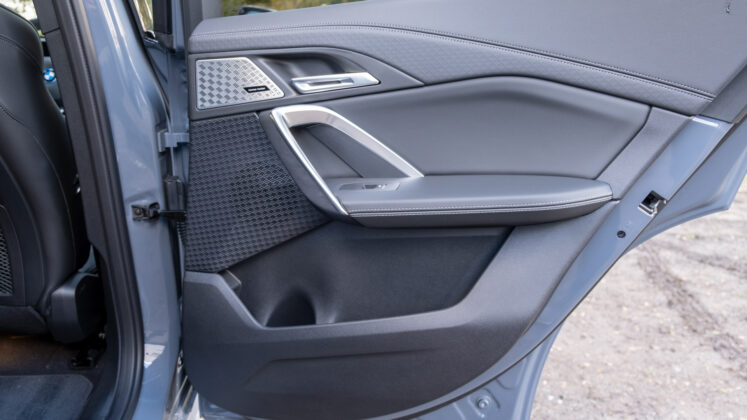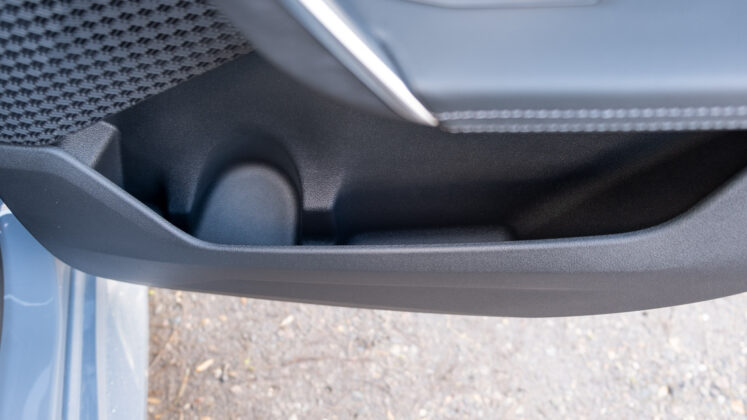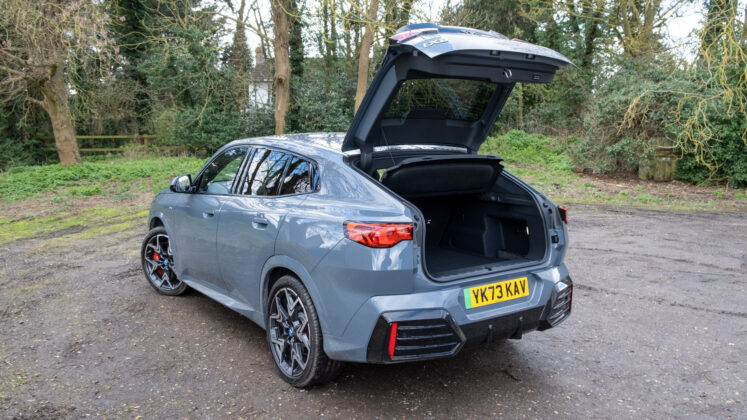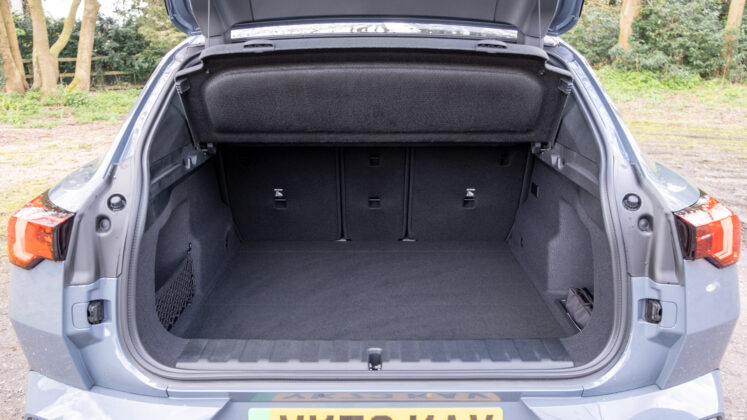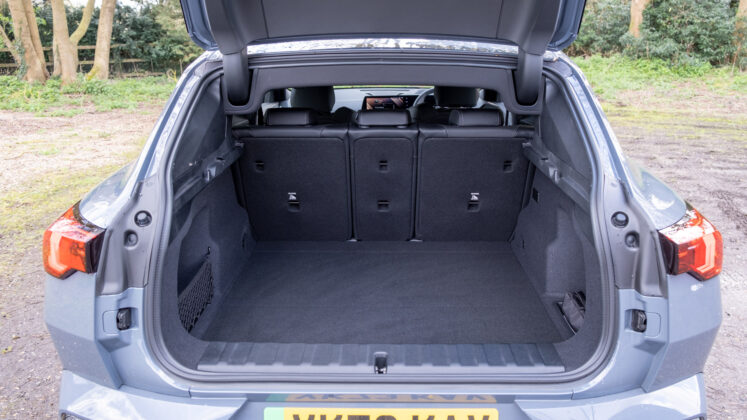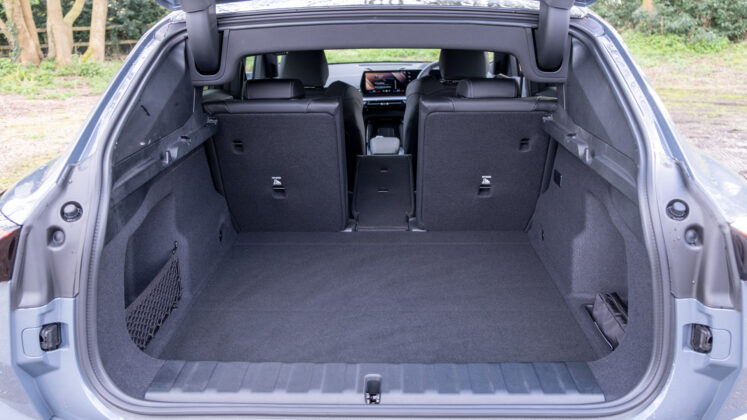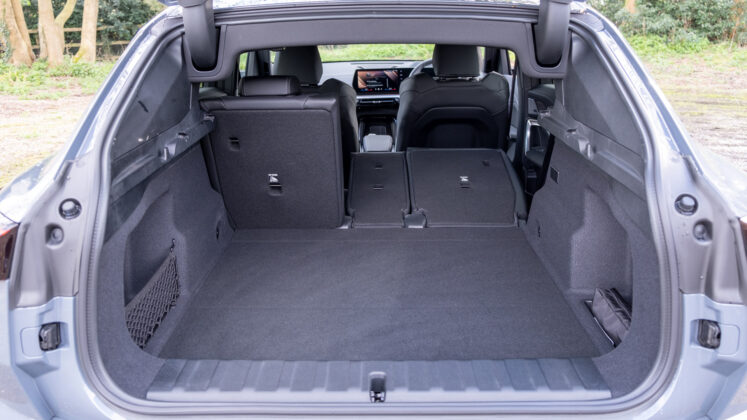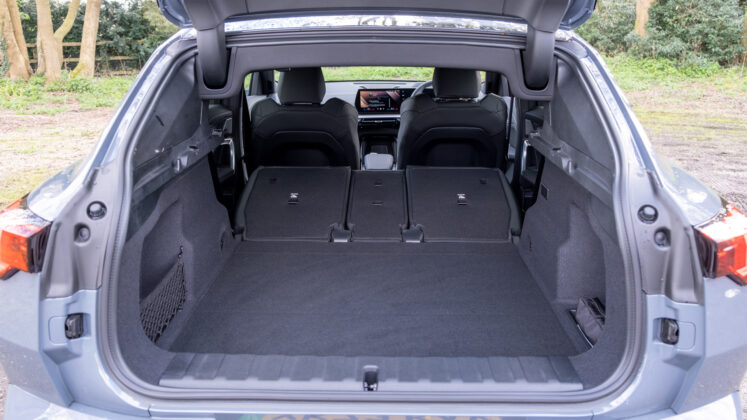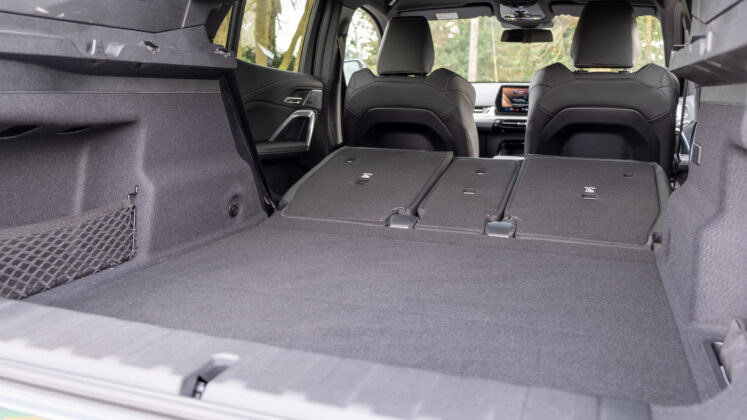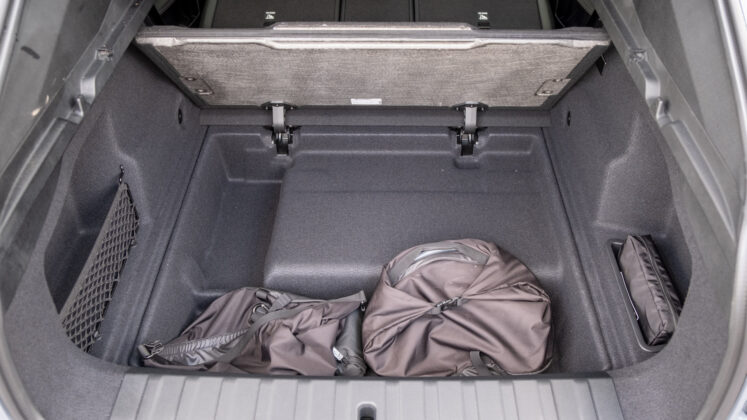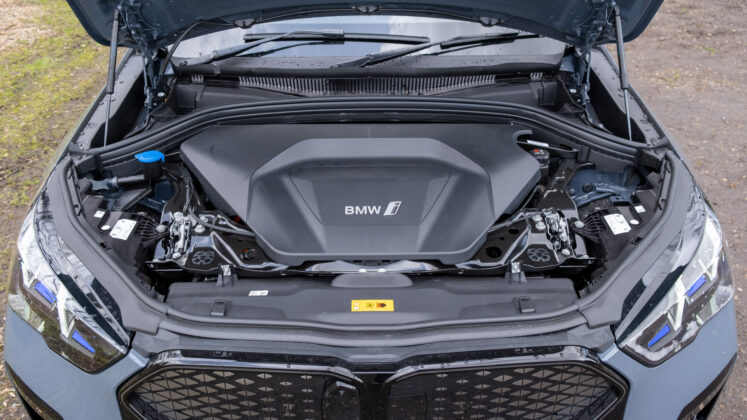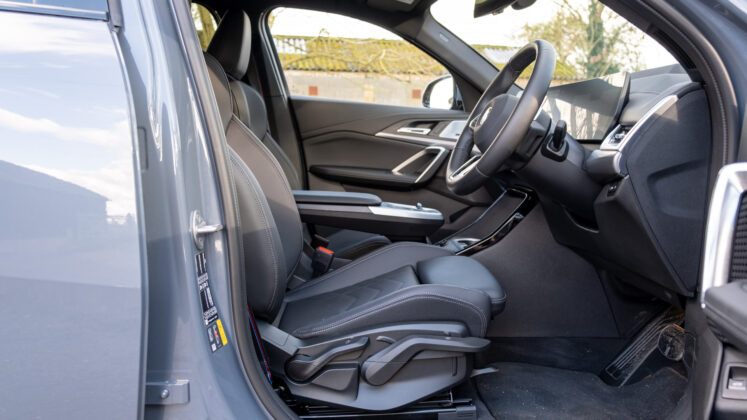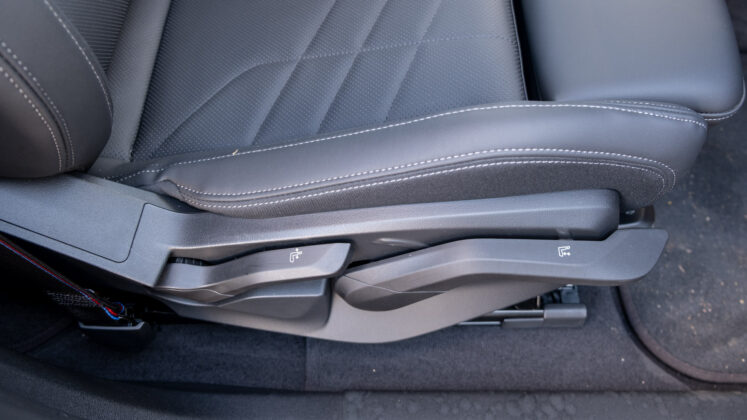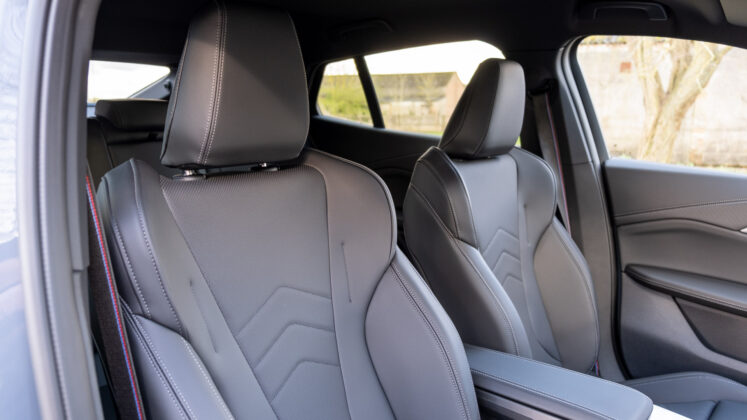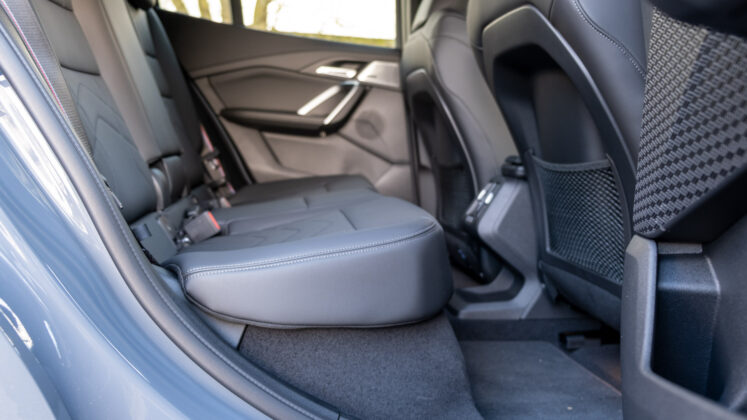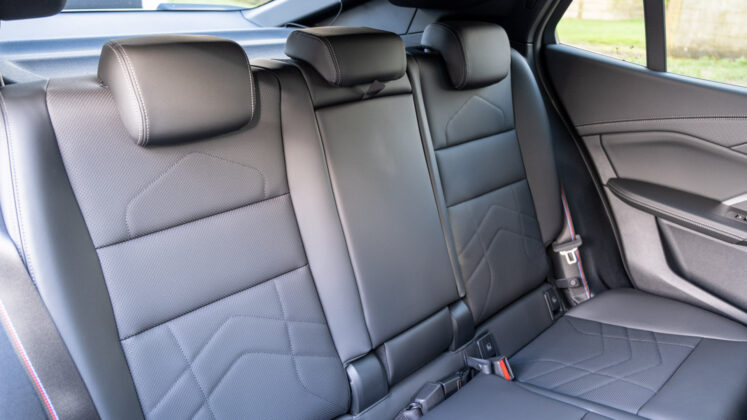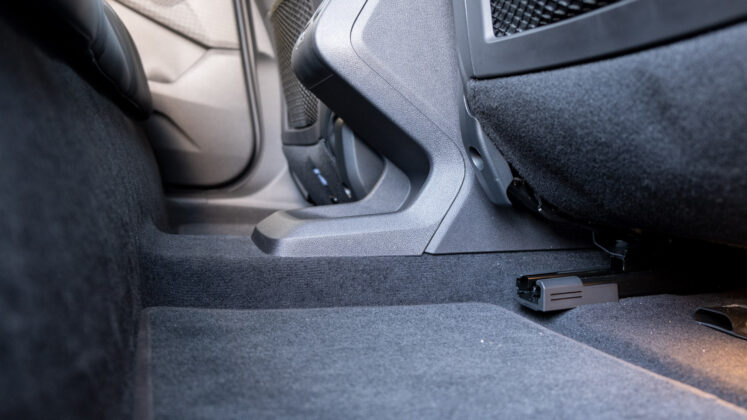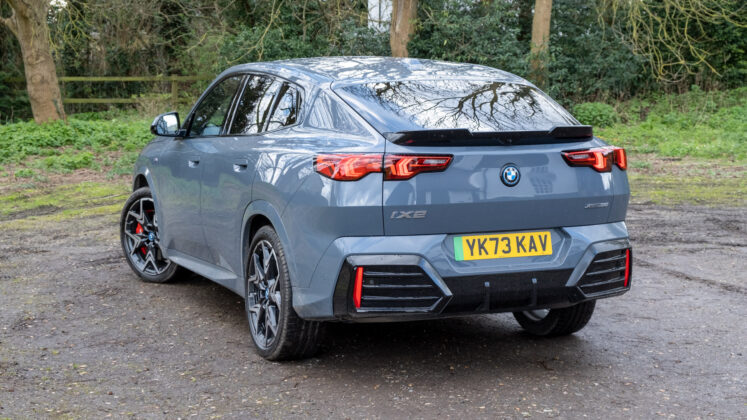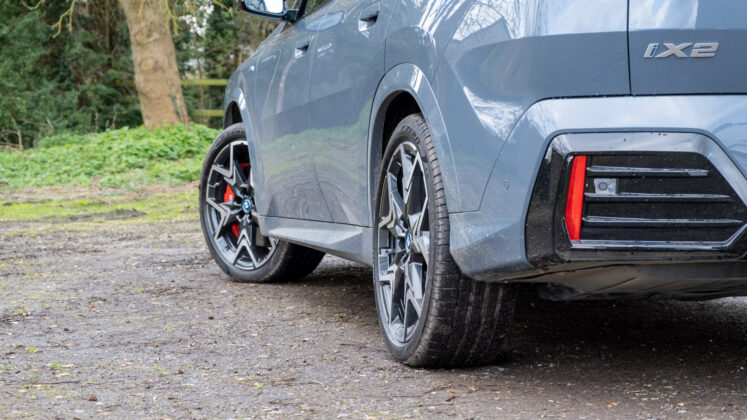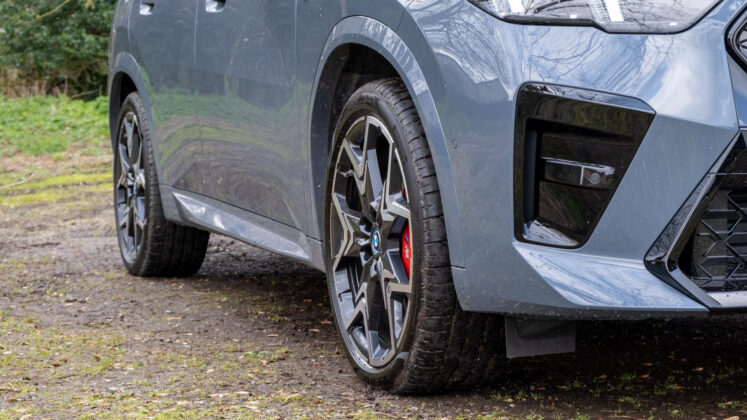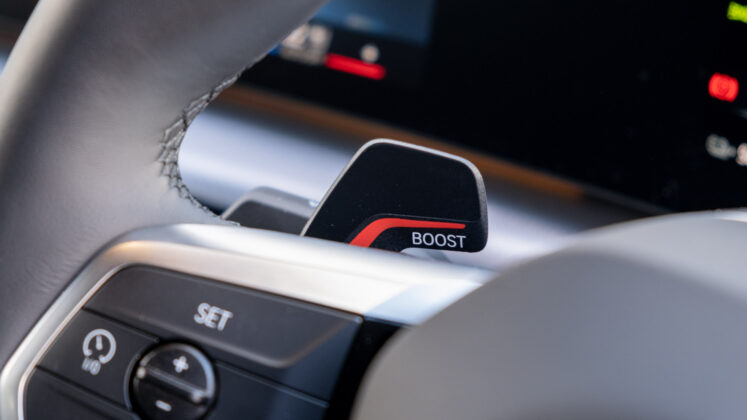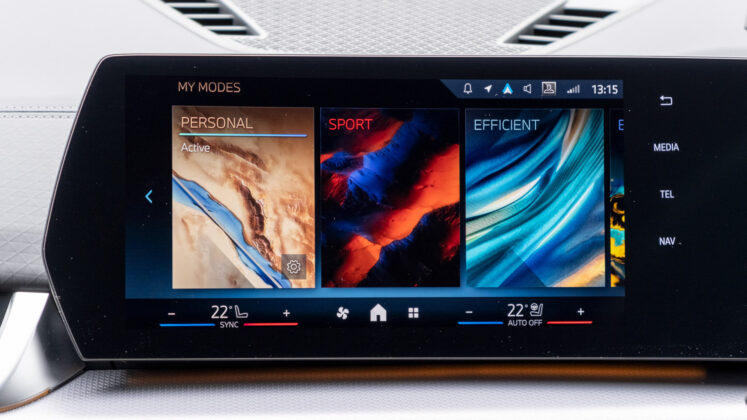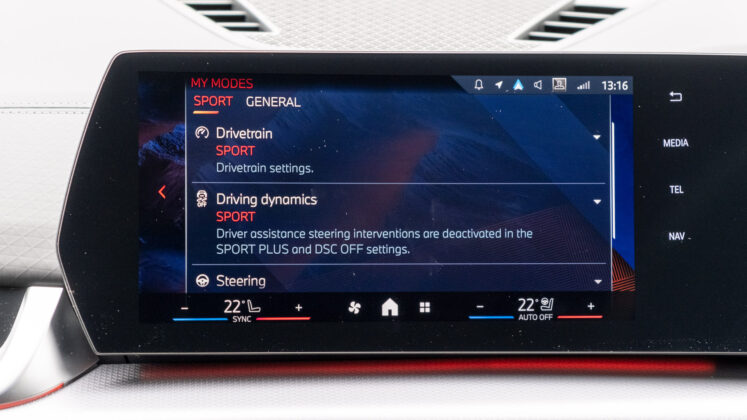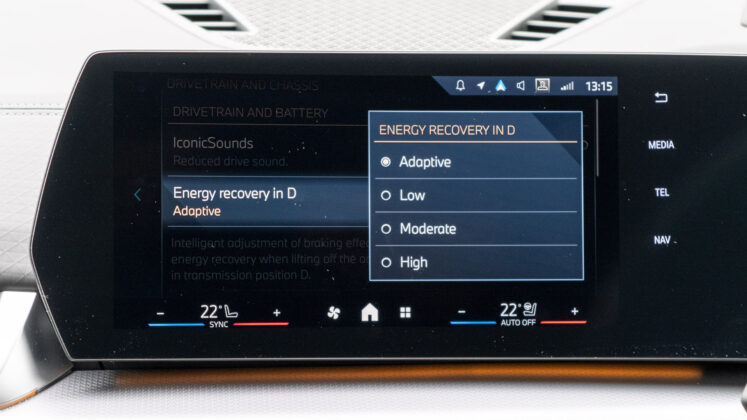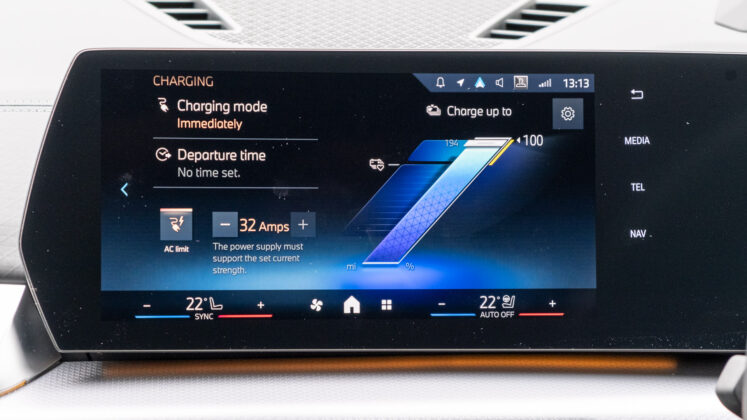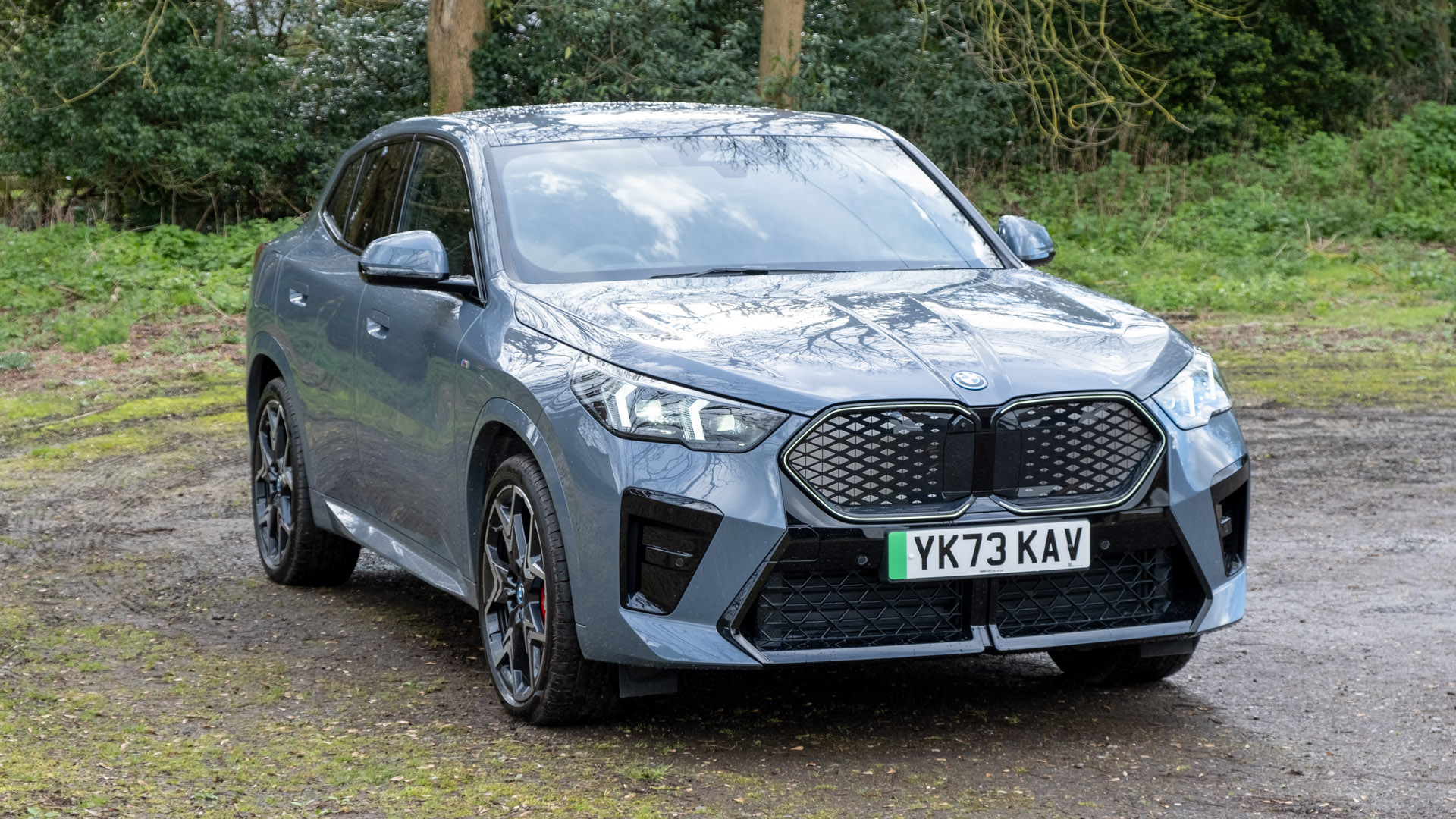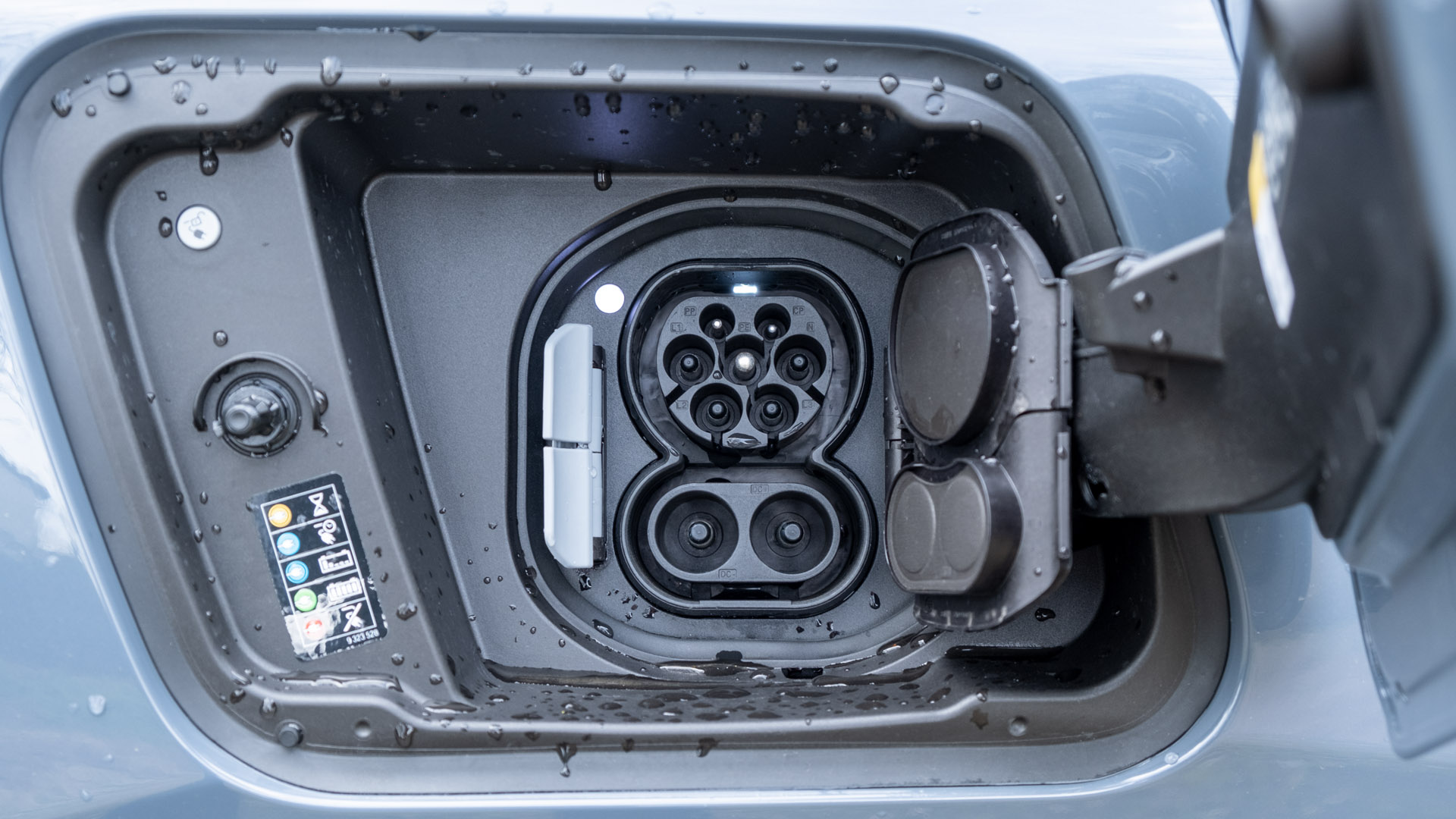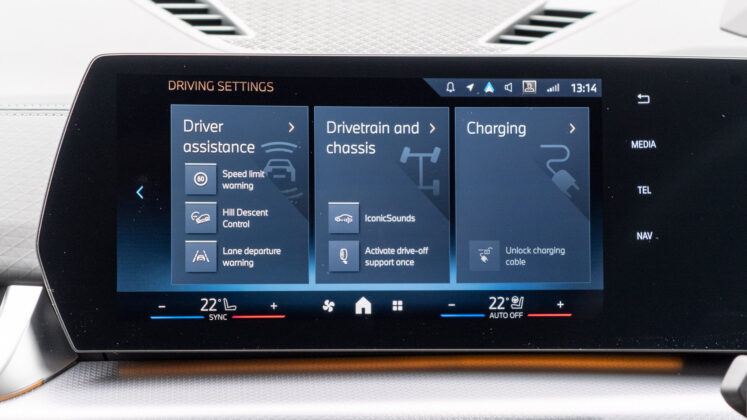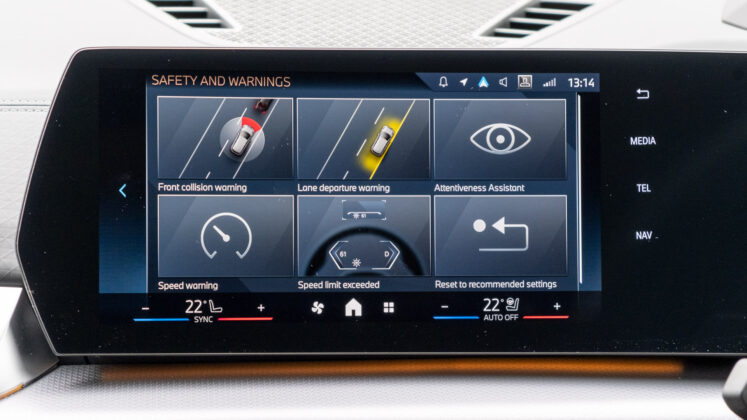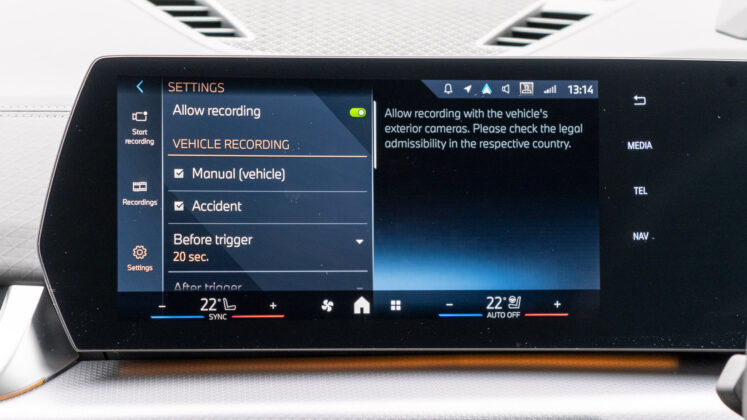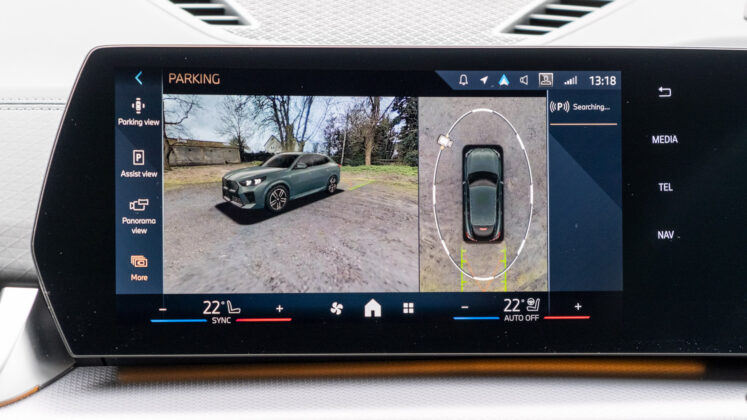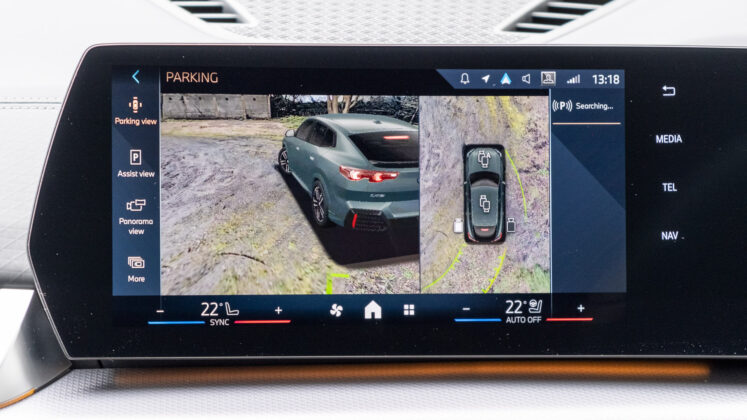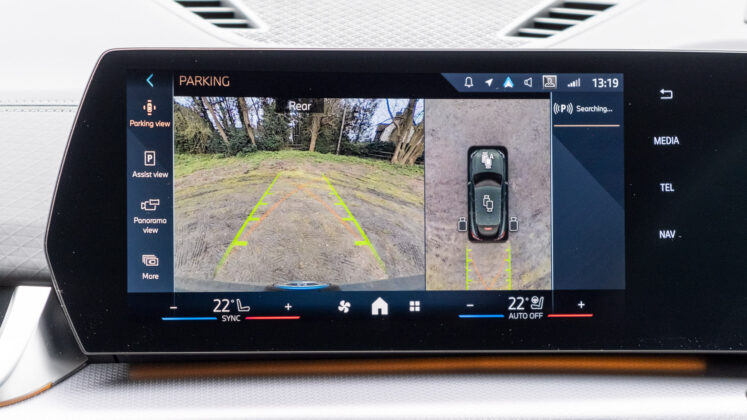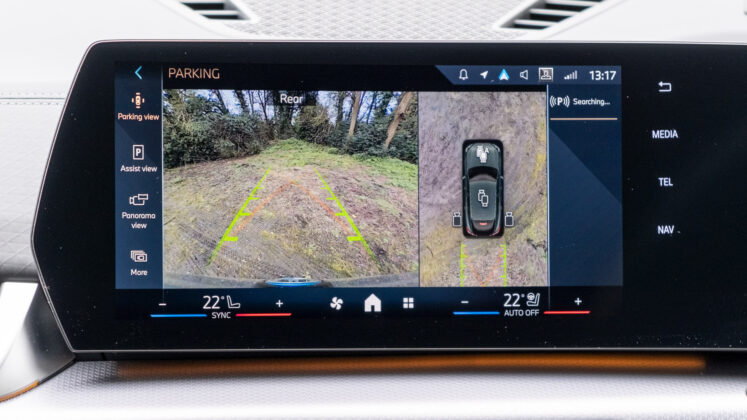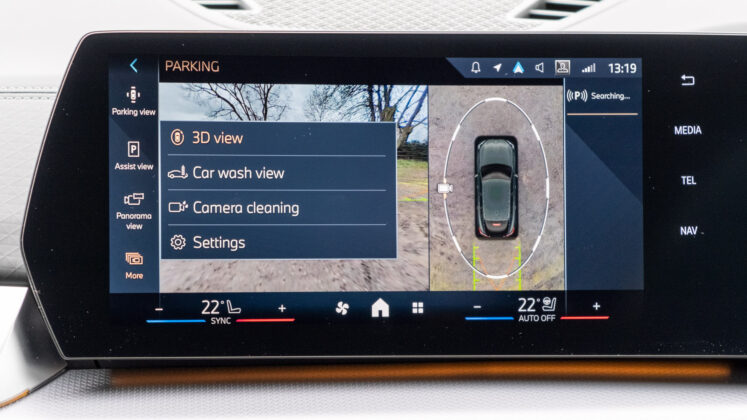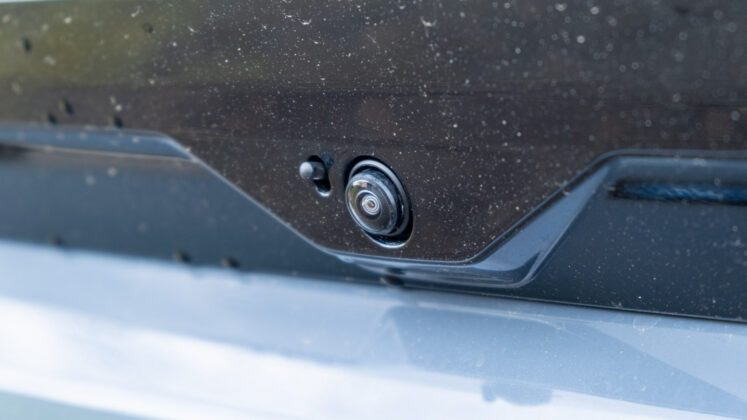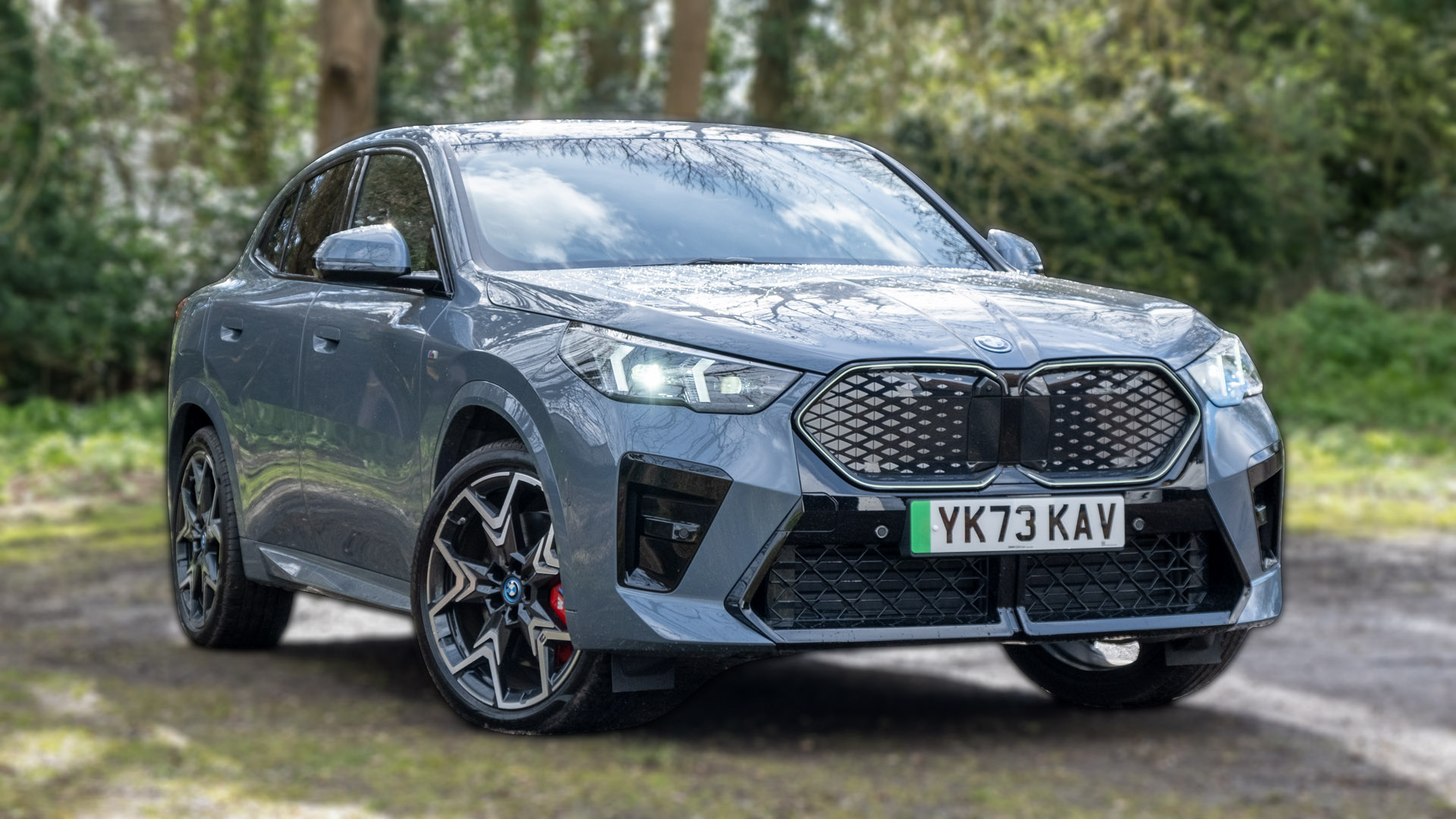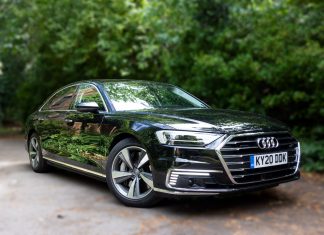The BMW X2 has been around since 2017 and is considered a sportier and less practical alternative to the X1. Now in its second generation (also known by its model code: U10), it’s available as a fully electric SUV. Indeed, the iX2 is built on the manufacturer’s UKL2 platform, which shares many similarities with its petrol and diesel siblings.
If you’d prefer to watch a review of the BMW iX2, head on over to our YouTube channel.
BMW iX2 price & competition
Unsurprisingly, the iX2 is dearer than the X2, which starts from £51,615 as opposed to £40,520 without options – of course, it’s not a like-for-like comparison but the all-electric variant has a higher barrier to entry.
At the time of writing and in the UK, the iX2 is available in two trim configurations: the eDrive20 M Sport (£51,615) and the xDrive30 M Sport (£57,445). The former has a front-wheel drive (FWD) configuration, while the latter that we have on review operates on an all-wheel drive (AWD) setup. A breakdown of the trims and packs can be found below (click to expand):
Looking at the all-electric SUV market, there are numerous vehicles to consider – focusing on AWD models, here are a few of the alternatives: the BMW iX1 xDrive30 from £44,560; the Skoda Enyaq iV 80x from £51,275; the Volkswagen ID.4 GTX from £51,580; the Kia EV6 GT-Line AWD from £51,595; the Hyundai Ioniq 5 AWD Ultimate from £51,900; the Tesla Model Y Long Range from £52,990; the Mercedes EQA 350 4MATIC from £53,010; the Audi Q4 50 e-tron from £55,310; the Volvo XC40 Recharge Twin from £56,150; the Genesis GV60 Sport from £58,365; the BMW iX3 from £62,865; the Jaguar I-Pace from £66,350; the Audi Q8 e-tron from £67,800; the Mercedes EQC 400 4MATIC from £70,035; the Ford Mustang Mach-E GT from £72,830; the Tesla Model X from £95,390; and the BMW iX xDrive50 M Sport from £107,305.
Read next: Audi Q8 e-tron review: An upgraded electric SUV
BMW iX2 exterior review
One of the key talking points about modern BMW vehicles is the exterior design. Unfortunately, the new generation X2 and iX2 are no exceptions, with their oversized kidney grilles. Unlike the iX1 and iX3, the iX2 has a little less cohesion with its exterior shell. The front looks quite robust, the bonnet gives off American-muscle car vibes, the alloys have a bit too much going on, while the rear is jacked up, and doesn’t look the part. Truthfully, it isn’t the prettiest vehicle BMW has produced, but of course, that’s all very subjective.
In terms of customisation, as standard you’ll have 19″ alloys with the option of getting 20″ alloys for an additional £700. Pictured are the “20” M Lt/Aly wheels V-spoke style 873 M Bicolour”. Our test vehicle also had the ‘Iconic Glow Kidney Grille’, which is only part of the £2,890 Technology Plus Pack – a rather strange pairing if you consider what else the pack includes.
As for your colour options, Alpine White comes as standard, while one of the metallic finishes, such as the pictured Storm Bay will set you back £595, while the Individual finishes will cost a whopping £2,100. With its towing capacity, the eDrive20 is rated at 750kg, while the xDrive30 sits at 1,200kg. Both have a roof load capacity of 75kg.
Read next: BMW iX3 review: The best driver’s feel?
BMW iX2 interior review
Its exterior design might not be everyone’s cup of tea, but thankfully inside the cabin it looks and feels the part. It competes with alternatives from Jaguar, Mercedes-Benz and Audi. The issue, however, is that it’s not overly practical. Climate controls are all touch-based and accessed solely from the infotainment system. Those with a keen eye will also notice that the iDrive selector is not present either, which will disappoint a few BMW loyalists.
Nonetheless, there are still physical buttons by the centre console and on the steering wheel, the latter is certainly appreciated as some manufacturers have chosen to include haptic or capacitative buttons instead.
With the manufacturer’s more modern approach, one would expect the 10.7” infotainment system to be optimised, and indeed it is. The display is vivid, extremely responsive, angled towards the driver and provides a suite of customisation (albeit a bit overwhelming due to the convoluted menu system), and supports Android Auto and Apple CarPlay over a wired and wireless connection.
Better still, navigation data from these third-party mobile operating systems feeds through to the 10.25” instrument cluster and the Head-Up Display (HUD). The former is fitted as standard across the range and is somewhat customisable, while the latter forms part of the Technology Plus Pack, which costs £2,890. It’s a shame that this cannot be added as a singular option.
What can be added on its own, however, is the 12-speaker 205W Harman Kardon audio system that costs £660. We’d highly suggest upgrading, as it adds better dynamism and clarity at the top end over the stock 100W six-speaker configuration. You can hear how the upgraded system performs by watching our dedicated audio review on YouTube.
Should you want to attain the best audio fidelity, you’ll want to be plugged into the infotainment system. There’s a 12V socket, and two USB Type-C ports at the front of the centre console, with the rear two supplying power only. The clever smartphone holder at the front of the cabin doubles up as a wireless charger, which is shockingly only available within the £1,680 Technology Pack. One would expect this to come as standard given the price tag of the vehicle or even be included as a cheaper option, but alas it’s not.
Read next: Kia EV6 review: The Hyundai Ioniq 5 alternative
BMW iX2 storage review
This brings us to storage, which is rather limited. There’s the glove box, the area for a smartphone at the front of the centre console, two cupholders and a relatively large open area underneath the overarching centre console. Within the centre armrest, you’ve got a very slender area, which will only suffice for a set of keys or very small-sized valuables. This compartment isn’t the most practical either, at least not for right-hand drive (RHD) vehicles, as the hinge is positioned by the driver and as such, it opens towards the passenger. An oversight by the German automaker.
Elsewhere, the door bins aren’t lined with any fabric, which means loose change or keys will be heard rattling around when traversing on uneven terrain. You will, however, be able to accommodate a 500ml bottle alongside small-to-medium-sized valuables. At the rear, the door bins are unsurprisingly a little more limited. To expand on storage at the back, you’ve got a pull-down armrest compartment, which reveals two cupholders.
Of course, for even more storage there’s the boot. With the seats in place, you’ve got 525 litres and with the seats folded flat, there’s 1,400 litres. Respectable figures, which should suffice for most consumers.
Here’s how its boot stacks up to its rivals: Tesla Model Y (854/2,100 litres); Audi Q8 e-tron (569/1,637 litres); Skoda Enyaq iV (585/1,710 litres); Genesis Electrified GV70 (503/1,678 litres); VW ID.5 (549/1,561 litres); VW ID.4 (543/1,575 litres); Hyundai Ioniq 5 (520/1,587 litres); BMW iX3 (520/1,560 litres); Jaguar I-Pace (656/1,453 litres); Audi Q4 e-tron (520/1,490 litres); BMW iX1 (490/1,495 litres); Genesis GV60 (432/1,550 litres); Citroen e-C4 X (510/1,360 litres); Kia EV6 (490/1,300 litres); Volvo XC40 Recharge Twin (452/1,328 litres); Ford Mustang Mach-E (402/1,420 litres); Mercedes EQA (340/1,320 litres); Citroen e-C4 (380/1,250 litres); and Smart #1 (411-976 litres).
When it comes to convenience, there’s an electric tailgate with hands-free operation that comes fitted as standard, 40:20:40 rear-split folding seats, a 12V socket, fixing points, a flat loading bay and a sizable underfloor compartment that can accommodate the vehicle’s charging cables. Unfortunately, the removable boot load cover cannot be stored in this area. Equally, it’s disappointing that the front of the vehicle doesn’t have a storage compartment (often referred to as a frunk); this is because the iX2 is based on the X2, which houses an engine at the front instead.
We should also highlight that the rear seats are a bit of a faff to fold as you’ll need to pull on the fabric loops, which are located by the base of each seat within the cabin – a release lever in the boot would have made things a bit more practical.
Read next: Skoda Enyaq iV review: The Volkswagen ID.4 alternative
BMW iX2 comfort review
This brings us to seating comfort. Here, all five seats are accommodating, with the driving position also being excellent. The seats are a little stiff but didn’t cause discomfort during our tests. At the front of the cabin, both headroom and legroom are a non-issue for 6-foot 2-inches (188cm) individuals.
However, the same couldn’t be said at the rear as it’s severely limited. For most adults, it’ll be uncomfortable to be sat in one of the rear seats – of course, it won’t be as problematic for younger adults or children. The rear footwell isn’t quite flat but is less pronounced than the iX3, which has a much larger transmission tunnel.
Still, one should consider that due to the positioning of the battery pack the rear seats are diagonally wedged, which can cause even more discomfort on longer drives. Equally, due to the iX2’s slopped roof line, the rear middle seatbelt is located by the headliner, which might be problematic for children to work out.
Another disappointment is that as standard, the front seats are manually adjustable. Should you want an ‘Active Seat’ for the driver, you’ll need to spend £250. If you’d like both front seats to be electronically adjustable and the driver seat to have a memory function it’ll set you back an additional £750. Even a heated steering wheel isn’t fitted as standard and costs £175. Rather ridiculous. Thankfully, heated front seats do come fitted as standard.
Speaking of options, the Panoramic Glass Roof will set you back an extra £1,100. A worthwhile consideration if you want to draw in some extra light within the cabin. As for your upholstery, M Alcantara Veganza comes as standard, while Leatherette costs an additional £795 and real Leather can be selected for an additional £1,150.
Read next: Citroen e-C4 review: Most comfortable SUV?
BMW iX2 performance review
Moving on, we get to driving comfort, which is excellent when cornering at speed thanks to the vehicle’s suspension setup. Both models feature M Adaptive Suspension as standard, which has a stiffer spring and damper setup with the vehicle also sitting 15mm lower.
The result is that body roll is kept down to a minimum and with the M Sport steering also present, the iX2 provides a good, albeit not perfect, driver’s feel. Despite the iX2 being the sportier sibling of the iX1, it doesn’t quite provide the same level of connection with the road and front axle. This is due to the steering wheel being a little lighter than what you might expect; of course, this has its benefits around town.
Make no mistake, however, the iX2 still feels responsive, especially in the Sport or Sport Plus driving modes and is up there with the likes of the BMW iX3, the Jaguar I-Pace and the Audi Q8 e-tron, but doesn’t quite take the crowd from the iX1, which reigns supreme in this department.
Given the slight compromise in the driver’s input, you might expect its suspension system to be more forgiving on city streets but alas, it’s still rather stiff. As such, it’s no match to the floaty soft Citroen e-C4 or e-C4 X, nor the adaptive air suspension that’s found in the Audi Q8 e-tron. While the BMW iX2 isn’t the most comfortable SUV to drive around town, it’ll still do a valiant job of masking potholes, speed bumps and anomalies.
So, what about when it comes to performance? The eDrive20 has a singular motor powering the front wheels, which combines with the 64.8 kWh battery pack to output 150 kW (204 hp) of power and 250 Nm of torque. It’s claimed to get to 62mph from a standstill in 8.6 seconds and has a top speed of 106 mph. The xDrive30 on review, has two electric motors, one on each axle that power all four wheels. The extra motor combined with the same-sized battery pack outputs 230 kW (313 hp) of power and 494 Nm of torque, giving the vehicle a claimed 0-62mph time of 5.6 seconds and a top speed of 112 mph.
Using Racelogic’s Performance Box Touch, we had the xDrive30 M Sport tested from 0-20mph in 1.39 seconds, 0-30mph in 2.11 seconds; 0-60mph in 5.04 seconds and from 50-70mph in 2.69 seconds. Indeed, the dual-motor iX2 is blisteringly quick.
Note, that these figures were attained in Sport mode with Boost enabled, while in Launch Control (you get a rumbling sensation when you’re prepped to launch). By momentarily shifting on the singular flappy paddle found behind the wheel, one attains peak performance no matter which drive mode you’re in. Without it activated and outside of Launch Control, the vehicle operates at a lower power output of 203 kW (272 hp); see Boost mode as a shortcut to max performance.
All the vehicle’s power is also smoothly delivered to both the front and rear axles; the xDrive30 operates on an all-wheel drive (AWD) configuration, which gives plenty of confidence when cornering at speed or while traversing uneven terrain. Braking performance is also impressive, with the ventilated front and rear disc brakes providing excellent stopping power. Most fully electric SUVs are lacking in this particular department, but it’s good to see the German manufacturer has fitted the appropriate equipment.
Read next: Volkswagen ID.5 review: Germany’s best electric SUV?
Of course, there is also regenerative braking, with the manufacturer claiming one can reattain up to 120 kW of energy via the brake pedal. Through the infotainment system, you can select the preferred amount of energy recovery while driving in D mode: Adaptive, High, Moderate and Low. Unfortunately, there’s no means of changing this conveniently through the infotainment system and none of the aforementioned modes provide a one-pedal driving experience.
Thankfully, there is B-mode, which can be easily initiated by shifting on the physical gear selector found by the centre console. This provides the maximum amount of deceleration when lifting off the accelerator pedal, and will also bring the vehicle to a complete standstill; an excellent addition when driving around town, especially considering many of its rivals surprisingly still don’t have said feature.
Buy a car phone mount on Amazon (Affiliate)
Recouping energy and being as efficient as possible will allow you to squeeze out as much range as possible from its 64.8 kWh battery pack. As standard, a heat pump is also included to help in colder conditions. BMW claims between 272-283 miles in the eDrive20 and 259-266 miles in the xDrive30. In our mixed driving tests of the latter model, we netted 205-225 miles, which is a little surprising considering the iX1 attained 225-245 miles, while the larger iX3 managed 235 miles. We’re not too sure why the iX2 performed worse, but even going based on BMW’s official WLTP figures, the iX2 has the lowest range claims – matching our data.
Aside from these vehicles, here is how its rivals compare: the VW ID.5 clocked in an impressive 325 miles; the Skoda Enyaq iV 80 300 miles; the Tesla Model Y Long Range 260-280 miles; the Audi Q8 e-tron 55 and Smart #1 Premium 250-270 miles; the Audi Q4 e-tron and the heat pump-less Volkswagen ID.4 attain roughly 260 miles; the Kia EV6 RWD 240-260 miles; the Jaguar I-Pace 240-250 miles; the Hyundai Ioniq 5 AWD Ultimate 230-250 miles; the Genesis GV60 Sport+ 210-230 miles; the Mercedes EQA 250 210-220 miles; Genesis Electrified GV70 200-220 miles; the BMW iX xDrive40 M Sport 200-210 miles; Audi e-tron S 190-210 miles; the Ford Mustang Mach-E 180-200 miles; and the Citroen e-C4 and Citroen e-C4 X 180-200 miles.
As you’ll be able to note the iX2 isn’t the best of the bunch, and the same could be said about its charging capacity, which is limited to 130 kW – it’s neither the best nor the worst of its class. As such, through its CCS port, you can attain a 10-80% charge in 29 minutes. As for its onboard charger, it’s rated at 11 kW but can be upgraded to 22 kW for £880. The former will take 6 hours 30 minutes to go from 0-100%, while the latter 3 hours 45 minutes. Aside from using a three-phase powered wallbox, if one connects to a 7 kW charge point, it’ll take 9 hours 45 minutes, while a 3-pin wall plug will take 32 hours 15 minutes instead.
Read next: BMW iX1 review: The best driver’s feel
BMW iX2 safety review
In terms of safety, the iX2 hasn’t been tested by Euro NCAP, while the regular X2 was tested back in 2015 but now has an expired 5/5 rating.
As for the driver assistance systems, here is what comes fitted as standard across the trim range: Attentiveness Assistant, Active Guard, Cruice Control with Speed Limiter, Lane Departure Warning, Speed Warning, Left Turn Warning, Evasion Assistant and Front Collision Warning.
We found that Lane Departure Warning was quite annoying, as it’s enabled each time you step inside the cabin (a rather intrusive Euro NCAP rule) and is actually counter-productive on the country roads. The only way to disable it is to faff around with the infotainment system, which is rather cumbersome as the automaker could have provided a convenient toggle on the steering wheel or stalks. Similarly, Speed Warning is always enabled. Thankfully, this can easily be turned off by long-pressing the SET button found on the steering wheel.
Should you want more assistance, you’ll need to splash out £540 on the Driving Assistant package, which brings: Lane Change Warning, Rear Crossing Traffic Warning with brake intervention, Exit Warning and Rear Collision Prevention.
For £720, you’ll find the Driving Assistant Plus package, which adds: Active Cruise Control
Steering and Lane Control Assistant, Speed Limit Info, Automatic Speed Limit Assist and Lane Departure Warning with Lane Return. It’s rather disappointing that all these features do not come fitted as standard, as you’ll find them included in cheaper alternatives.
There’s also the Driving Assistant Professional package at a whopping £1,650, which goes even further by including: Steering and Lane Control Assistant with active navigation guidance Approach Control, Lane Keepting Assistant with active side collision protection, Crossing-traffic Warning front/rear, Emergency Stop Assistant, and Road Priority Warning.
Equally, it’s disappointing that if you want a Surround-view Camera system and Remote 3D View, you’ll have to splurge on the Technology Plus Pack, which encompasses the Parking Assistant Plus option and costs £2,890.
Thankfully, there are rear and lateral parking sensors and a rearview camera that come fitted as standard; a washer jet is also present to clean the lens. The camera is much needed as visibility at the back is limited due to the iX2’s sloped roofline; unlike the iX1 and iX3 there’s no rear wiper. Elsewhere, visibility at the front and side is good, while manoeuvrability is a breeze.
Read next: Jaguar I-Pace review: Better than newer rivals?
TotallyEV’s verdict on the BMW iX2
On the whole, it’s hard to recommend the BMW iX2 considering that there are plenty of other options out there on the market, including the iX1 and iX3. The former is one of our favourite all-electric SUVs. Considering the iX1 is cheaper, more engaging to drive, has a longer electric range, offers better legroom and headroom for rear occupants, and a near-identical interior layout, it’s tricky to think why anyone would pick the iX2 over its sibling.
What do you make of the BMW iX2? Let us know in the comments section below or via social media; we’re on: YouTube, Instagram, Facebook, X and LinkedIn.

